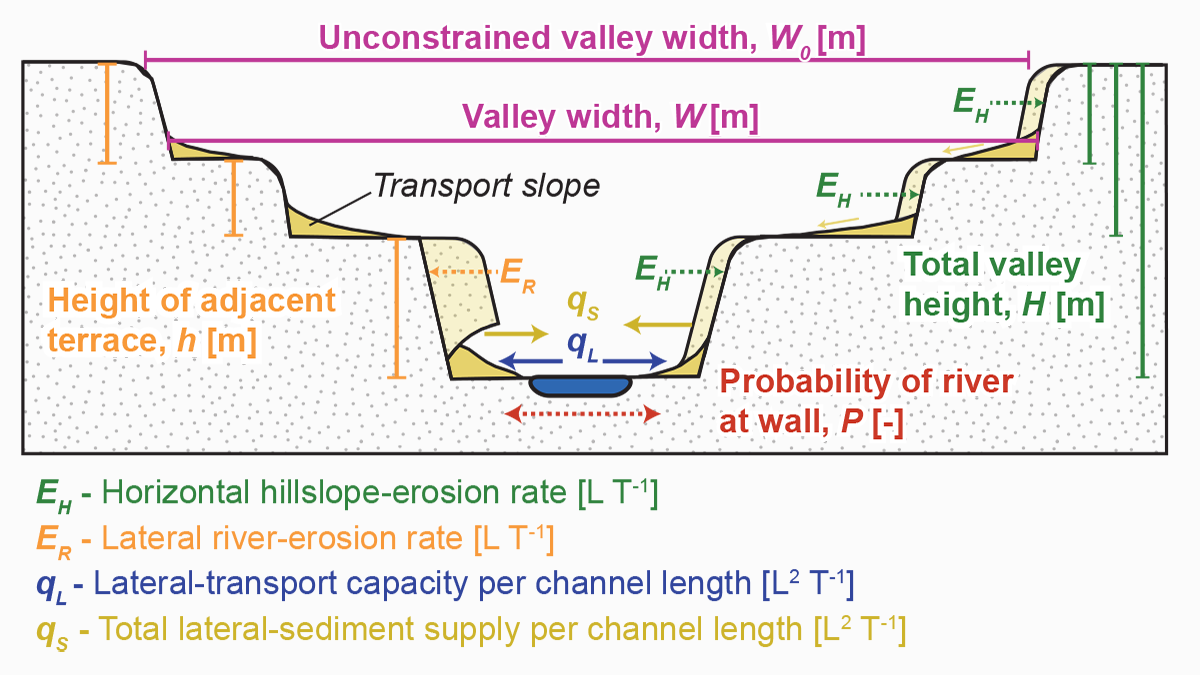Source: AGU Advances
Editors’ Highlights are summaries of recent papers by AGU’s journal editors.
The shape of fluvial valleys results from the complex interaction between climate and the local environment. Our current knowledge suggests that river discharge and valley-wall lithology are the main controls on valley width. Yet, current models based on these observations fail to explain the full range of valley shapes that we observe in nature, thus pointing out relevant gaps in our knowledge. Tofelde et al. [2022] revise previous interpretations to explain what they observed in 16 valleys distributed around the globe. They conclude for the first time that alluvial valleys evolve to a width at which sediment removal from valley walls matches lateral sediment supply from hillslope erosion. Therefore, they identify valley height as an important driver to explain the complex form of the landscape.
The above findings facilitate the reconstruction of past climate and tectonic conditions from valley topography. This information opens new doors for improving our knowledge on how Earth reached current shape and how the Earth spheres (e.g., atmosphere, hydrosphere, lithosphere, pedosphere) interact in the whole Earth system.
Citation: Tofelde, S., Bufe, A., & Turowski, J. M. [2022]. Hillslope sediment supply limits alluvial valley width. AGU Advances, 3, e2021AV000641. https://doi.org/10.1029/2021AV000641
—Alberto Montanari, Editor, AGU Advances

